Having desktop shortcuts on your Windows 10/11 computer is a convenient way to access important files and system folders quickly. Furthermore, whenever new software is installed, Windows automatically detects the software and creates shortcuts for easy access. Unfortunately, many Windows 10/11 users have recently reported Windows 10 desktop icons are missing. This may be due to system file corruption or other issues.
If you have recently switched to Windows 10/11, you might not see any desktop icons initially. Furthermore, if your desktop icons have disappeared unexpectedly, do not worry. Seven simple methods are discussed in this guide that you can use to restore them easily.
Part 1. Why Do Missing Icons on Desktop Windows 10/11 Happen?
Sadly, a recent update for Windows 10/11 accidentally made desktop icons disappear, even though they are still there. This happens because of a specific setting. To assist you in resolving missing icons on the desktop Windows 10/11 issue, we have compiled a list of several other causes that can lead to this issue.
- Icon Cache Corruption: The icon cache is like a storage place for icon information to be shown quickly. Sometimes, this storage can get messed up or damaged, making icons disappear from the desktop.
- Display Scaling Settings: Changing how big or small things appear on your screen can affect how icons are shown. Sometimes, icons missing on desktop Windows 10/11 might go off the screen or look strange if the display scaling settings need to be set up correctly.
- Automatic Arrangement: Windows has a neat feature that automatically arranges your desktop icons. But turning on this feature can sometimes make your icons move around or hide from your sight.
- Third-Party Software: Some programs or tools made by other companies might not get along well with your desktop icons. This can cause icons to vanish or not show up as they should.
- System File Error: If the important files that handle your desktop icons get damaged or broken, it can cause problems with how the icons are displayed. They might need to look better or show up at all.
Part 2. How to Fix Missing Desktop Icons in Windows 10/11
Experiencing icons missing on desktop Windows 10/11 can be highly frustrating. Restoring your icons to the desktop is a simple task that can be accomplished by following a few straightforward steps. Just by implementing the methods outlined below, you can efficiently regain the icons without delay.
1. How to Restore Missing Desktop Icons in Windows 10/11 Via View Setting?
In Windows 10/11, managing your desktop icons is a straightforward process that allows you to show or hide them with just a few clicks easily. If you have unintentionally hidden your desktop icons and need to retrieve them, follow the given instruction:
Instruction: Place your cursor on the desktop at any empty spot. Then, right-click your mouse button and select the "View" option. Now, from the extended options, choose "Show Desktop Icons", and your icons will appear on the spot.
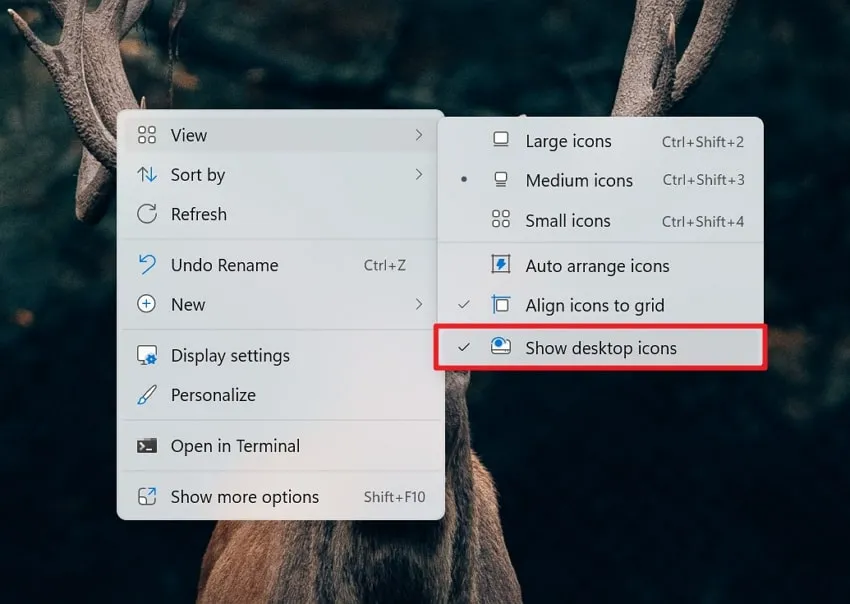
2. How to Restore Missing Icons on Desktop Windows 10/11 Via Disabling Tablet Mode
In case you have enabled Windows tablet mode, you may encounter a situation where your desktop icons suddenly disappear. Although, you can solve this issue. By turning off tablet mode, you can restore the visibility of your desktop icons. For how to fix missing desktop icons in Windows 10/11 concern:
Step 1: To open the Start Menu on your desktop, tap the “Windows” icon. Now, select the “Gear” icon to open the Windows settings. Afterward, choose "System" from the available options and head to the "Tablet" option in the left side panel to adjust its settings.
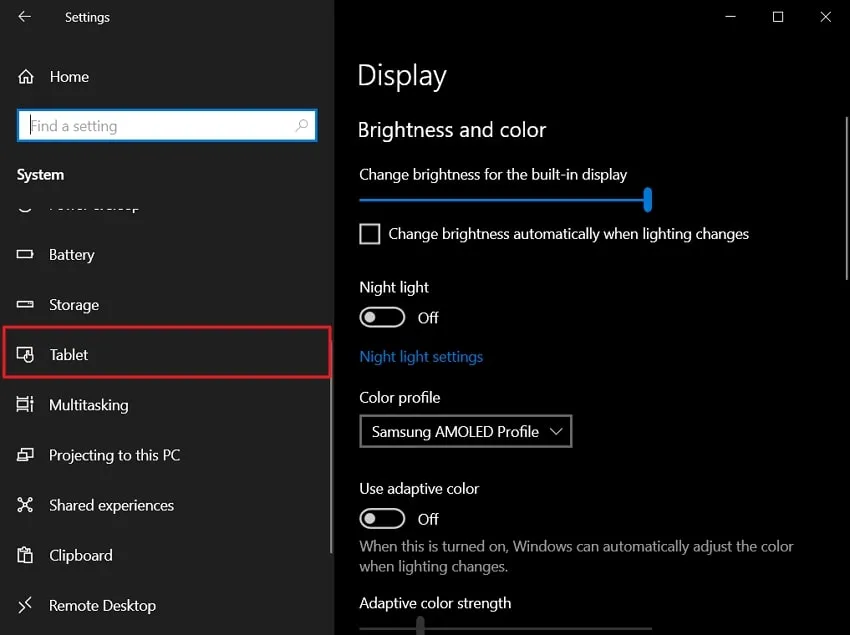
Step 2: Following this, under the “Tablet” section, open the "When I Sign in" drop-down menu and select the "Never Use Tablet Mode" option. After that, open the "When I Use this Device as a Table" drop-down list and choose the "Don't Switch to Tablet Mode" option. Doing this will fix your issue.
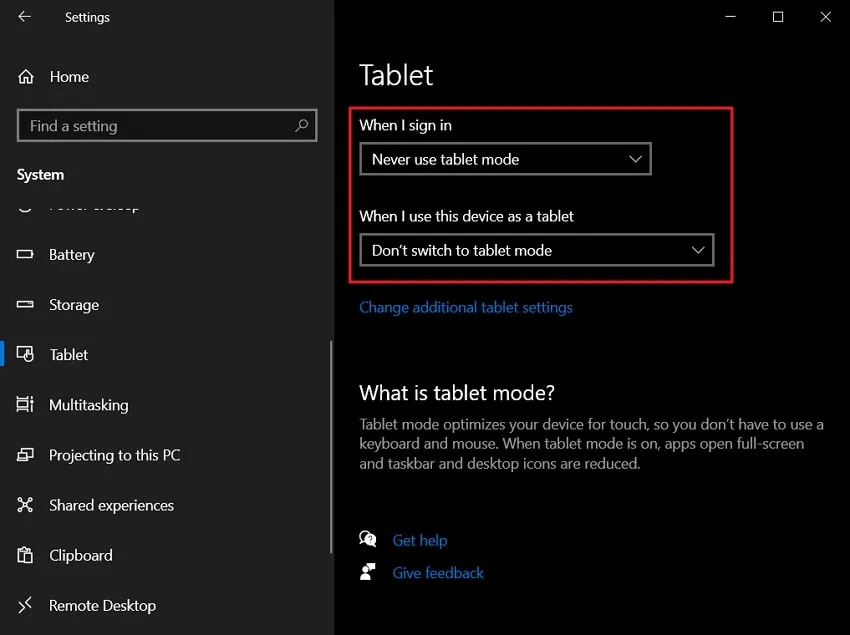
3. Fix Windows 10/11 Desktop Icons Missing Via Command Prompt
In addition to the steps mentioned above, another approach to restoring missing icons on desktop Windows 10/11 involves using Command Prompt. This method authorizes an advanced system configuration level, enabling you to make specific changes and adjustments. Apply the steps below on your desktop:
Step 1: To quickly open the command prompt, simultaneously press the Windows and R keys on your keyboard. This will open the "Run" dialog box, where you can access the command prompt easily.
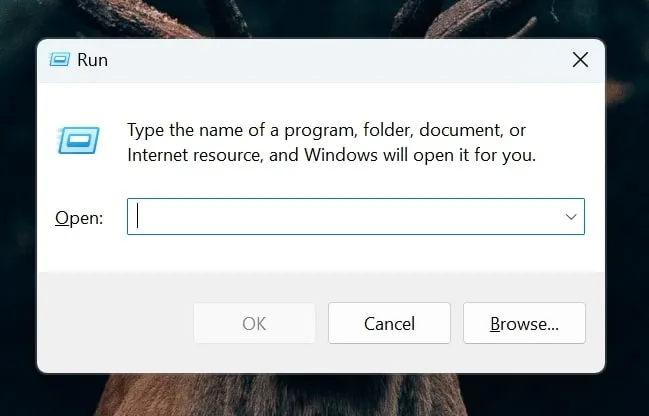
Step 2: First, enter "cmd" in the box next to "Open": and then click the "OK" button to open the Command Prompt Window. Next, type the commands below and press the Enter key after each command.
taskkill /F /IM explorer.exe
cd / %userprofile%\AppData\Local
attrib -h IconCache.db
del IconCache.db
start explorer.exe
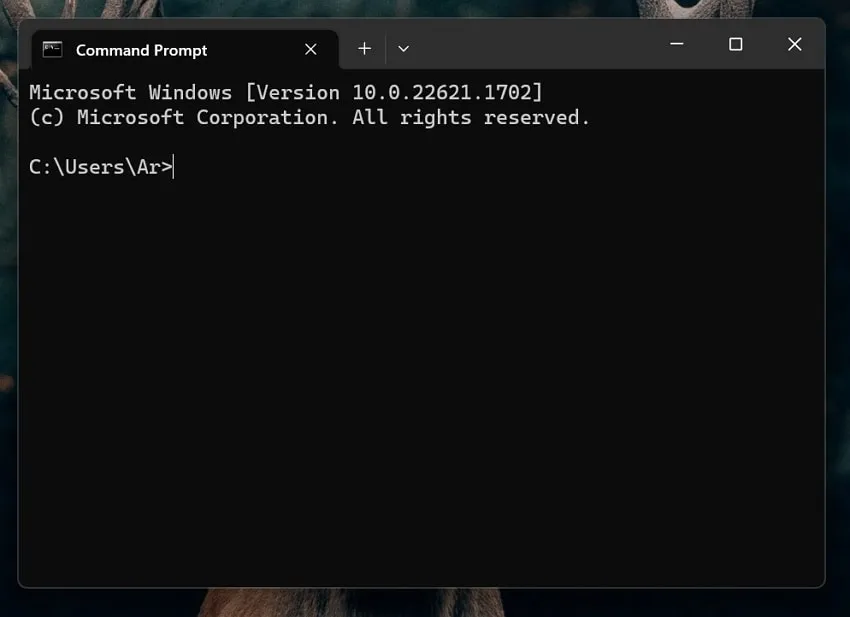
Note: After the process, restart your PC, and you will notice the changes already applied. Moreover, you will be able to see your icons back.
4. Fix Missing Icons on Desktop Windows 10/11 Via System File Checker
Included as a built-in feature in Windows 10/11, the System File Checker offers a solution for resolving corrupted system files. You can effortlessly restore missing icons on desktop Windows 10/11 by initiating an SFC scan. Here are some simple steps you can take to solve the problem efficiently:
Step 1: To begin, go to your Windows 10/11 desktop. Look for the "Search" bar and type "cmd". Once you see the option for "Command Prompt", right-click on it. From the pop-up menu that appears, select the "Run as Administrator" option.
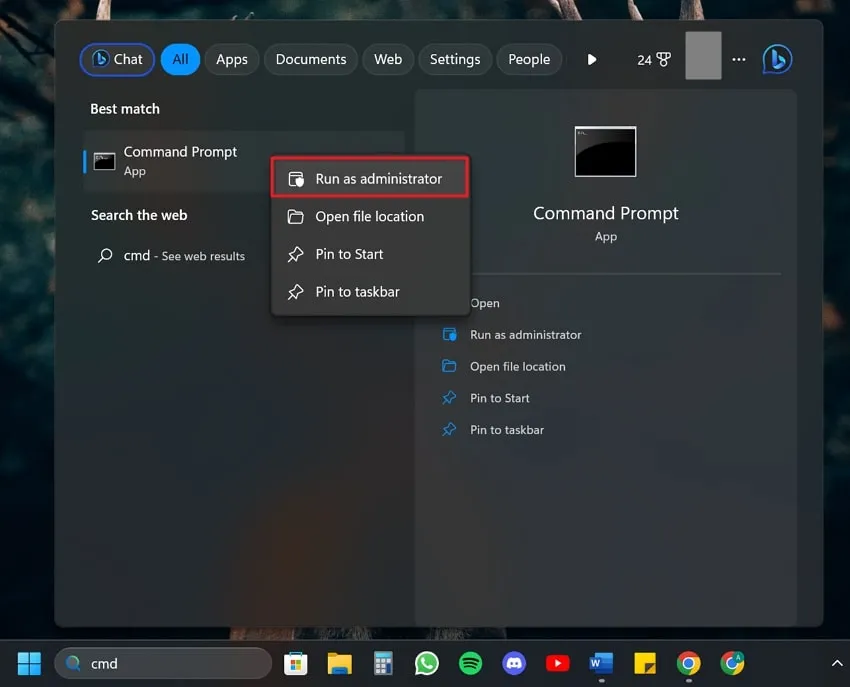
Step 2: A "User Account Control" message will appear as you move forward. Hit the "Yes" button to grant permission. Afterward, in the Command Prompt window, type "SFC /scannow" and press the "Enter" button to start executing the scanning process.
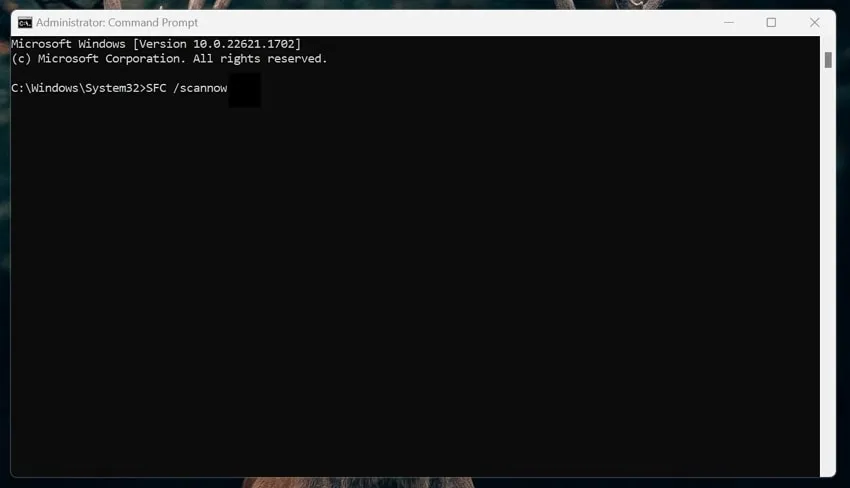
Note: Keep the Command Prompt window open and avoid shutting down your computer while the scan runs. Moreover, you may need to restart your PC for the changes to apply changes completely.
5. Fix Icons Missing on Desktop Windows 10/11 Via Theme Settings
Restoring icons on your desktop Windows is a simple process that can be done in just a few clicks. You can access the theme settings to enable the display of icons on your screen. Follow the given stops:
Step 1: First, press the Windows icon and the Start Menu will be launched. Continuing this, hit the "Settings" app to open the Settings window.
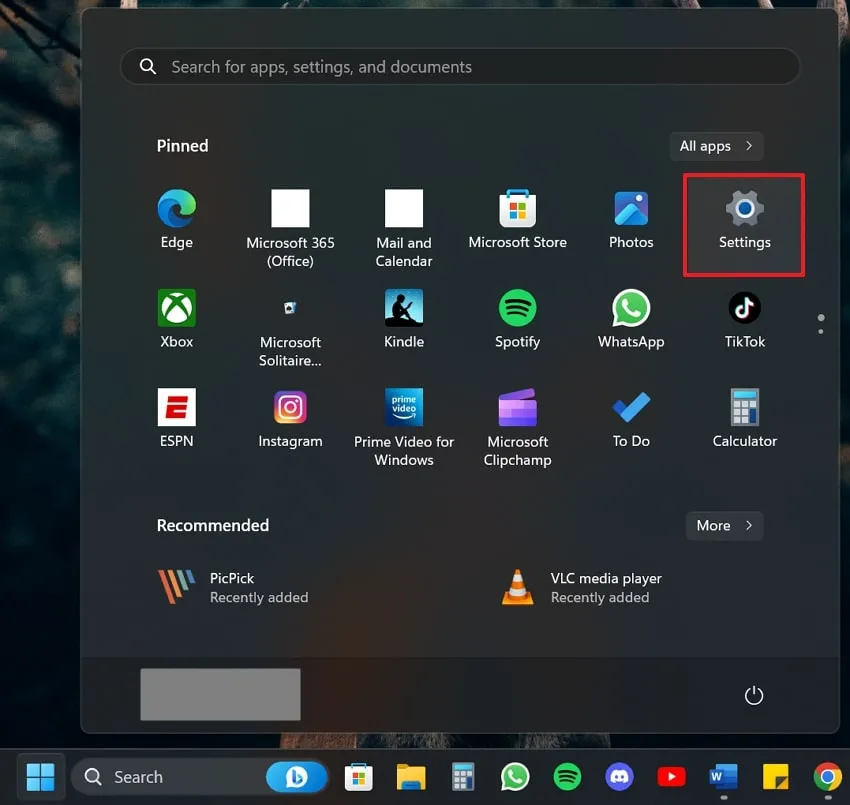
Step 2: Afterward, select the "Personalization" option on the left side and click "Themes" on the right.

Step 3: Next, continue scrolling down until you see the "Themes" section. Locate the "Desktop Icon Settings" option and proceed with it. This will open an open window for adjusting desktop icon settings. Under the “Desktop Icons” section, tick the icons you want to be displayed on the desktop. Then, press the “Apply” button and continue by pressing “OK” to save the settings.
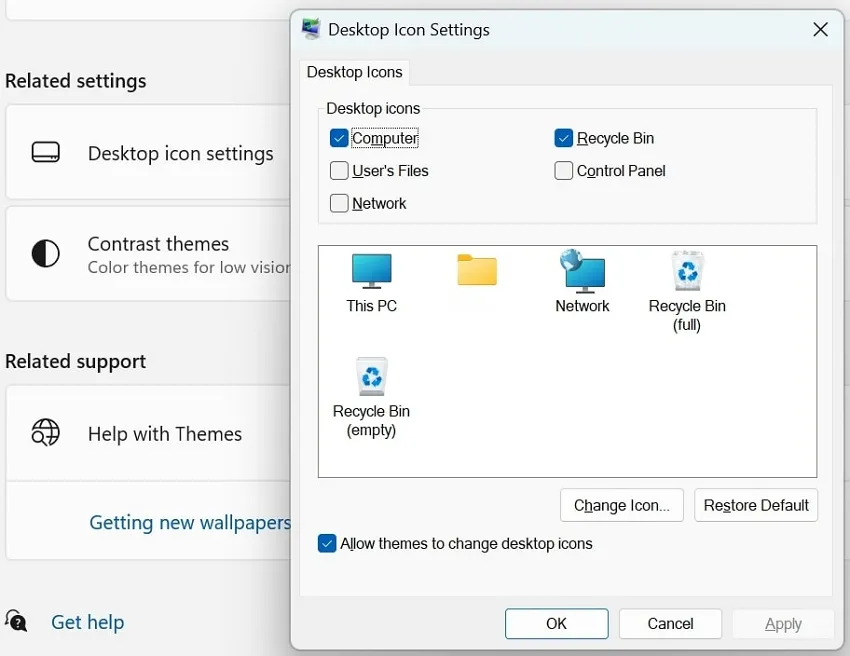
6. Fix Icons Missing on Windows Desktop Via System Restore
The icons missing on desktop Windows 10/11 could be attributed to a recent system change. If you cannot identify the specific cause, one possible solution is to utilize the System Restore feature. Get assistance from the following steps:
Step 1: For this, press the Windows and R key to open the “Run” dialog box. After that, type “sysdm.cpl” in the address bar, and on your keyboard, hit the Enter key or press the "OK" button.
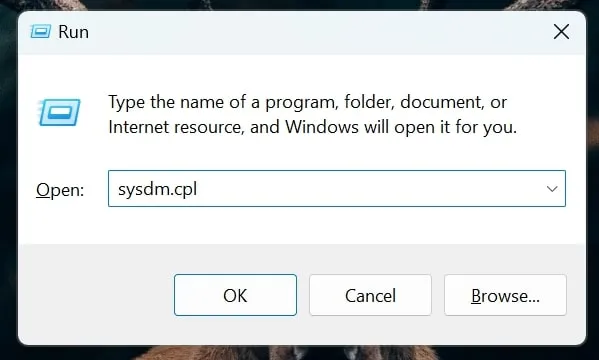
Step 2: Afterward, under "System Protection", press the "System Restore" button. On the next window, tap "Next>" and select the Restore point. Again, tap on the "Next>" button and finally select “Finish” to complete the process.
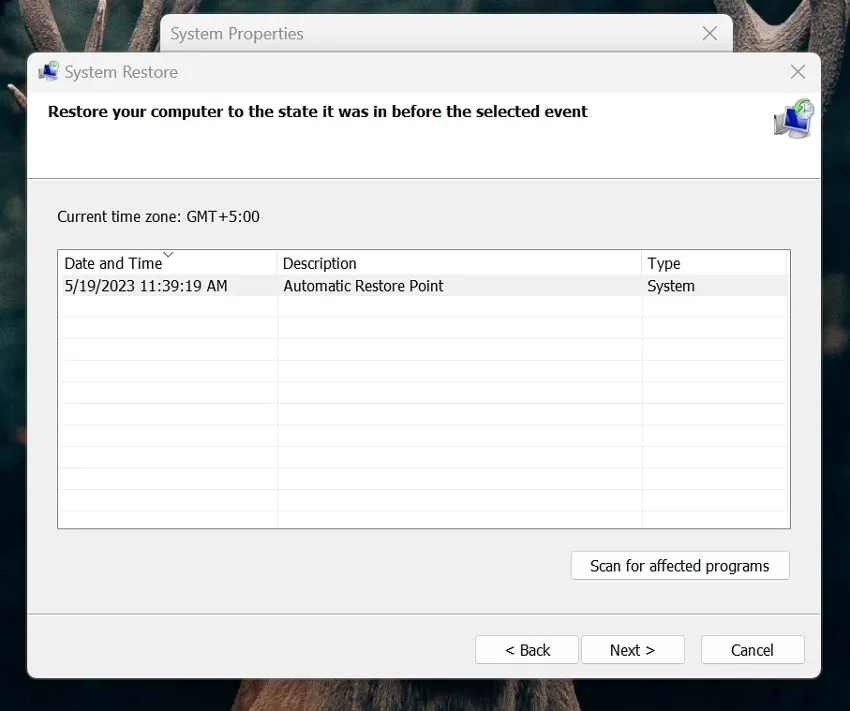
7. Fix Windows 10/11 Desktop Icons Missing Via Updating Windows
Updating the latest release of Windows can be a beneficial step to address various system issues on your device. Countless users have reported that performing an update successfully resolved known bugs and missing icons on desktop Windows 10/11 problems. To update the Windows, follow the easy instructions provided below:
Step 1: To open the "Settings" menu on your Windows desktop, hit the "Windows" and "I" keys together. Then, look for the "Windows Update" option in the menu on the left side and click on it.
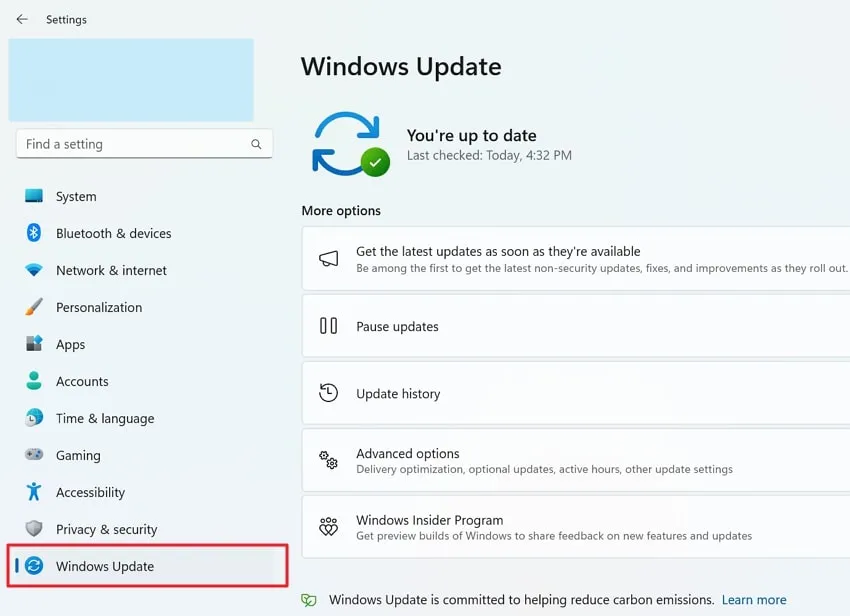
Step 2: After that, proceed with the "Windows Update" tab and click on the "Check for Updates" button. Windows will then start searching for any updates on its own. Then, tap the "Download & Install" button if it appears to update Windows within minutes.
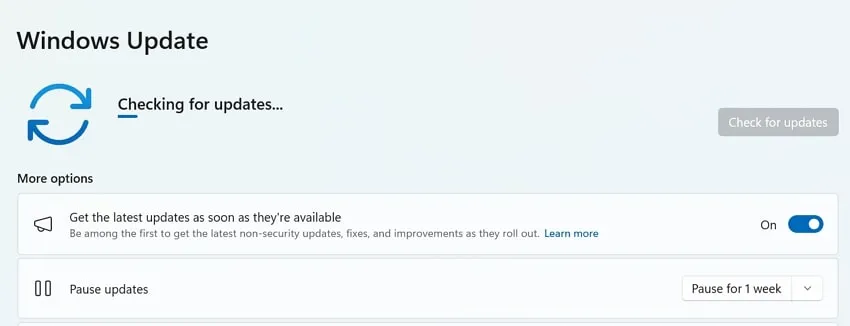
Part 3. The Best Windows PDF File Manager
Many users looking for the perfect tool to manage their PDF files can now take benefit of UPDF. With its innovative interface and powerful features, this file manager is your go-to solution for all PDF-related needs. One of the standout features of UPDF is its integration with UPDF Cloud. This cloud storage option allows you to upload your files and manage them from anywhere conveniently. You can download UPDF via the below button to manage your PDF files on Windows now.
Windows • macOS • iOS • Android 100% secure
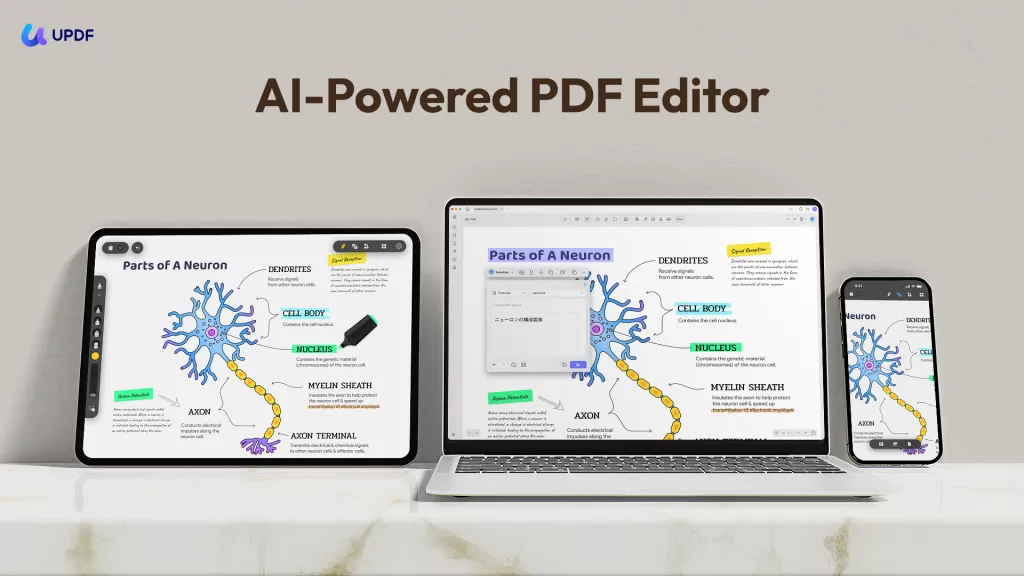
But that's not all. UPDF offers a range of useful functionalities to enhance your PDF file management experience. You can rename, download, delete, and even start your cloud files. In addition, the recent tab presents your files in an organized manner. Moreover, this PDF toolkit allows you to view them as a list or in thumbnail form.
Key Features
- Modify and Edit PDF Documents
- Add Notes to PDF Files
- Arrange and Manage PDF Pages
- Convert PDF to Various Formats
- Share and Send PDF Files via Email or Link
- Apply Watermarks to PDFs
- Secure and Encrypt PDF Documents
- Electronically Sign PDF Files
It is not the end. To have an overall understanding of UPDF, you can read this UPDF review of Laptopmedia or watch the below video tutorial.
Ending Note
Summarizing this, if you are facing the frustrating issue of Windows 10 desktop icons missing after restarting your Windows 10/11. There are several effective ways mentioned above in this guide to fix it. However, none of your files will be affected or damaged, But still, make sure to back up your important files before attempting any major fix.
In addition, a popular tool called UPDF can help you manage your PDF files and do much more. UPDF allows you to edit, convert, and organize your PDF documents effortlessly. This tool enables you to take charge of your PDF files and easily optimize your workflow. Just click the below button to start a free trial.
Windows • macOS • iOS • Android 100% secure
 UPDF
UPDF
 UPDF for Windows
UPDF for Windows UPDF for Mac
UPDF for Mac UPDF for iPhone/iPad
UPDF for iPhone/iPad UPDF for Android
UPDF for Android UPDF AI Online
UPDF AI Online UPDF Sign
UPDF Sign Edit PDF
Edit PDF Annotate PDF
Annotate PDF Create PDF
Create PDF PDF Form
PDF Form Edit links
Edit links Convert PDF
Convert PDF OCR
OCR PDF to Word
PDF to Word PDF to Image
PDF to Image PDF to Excel
PDF to Excel Organize PDF
Organize PDF Merge PDF
Merge PDF Split PDF
Split PDF Crop PDF
Crop PDF Rotate PDF
Rotate PDF Protect PDF
Protect PDF Sign PDF
Sign PDF Redact PDF
Redact PDF Sanitize PDF
Sanitize PDF Remove Security
Remove Security Read PDF
Read PDF UPDF Cloud
UPDF Cloud Compress PDF
Compress PDF Print PDF
Print PDF Batch Process
Batch Process About UPDF AI
About UPDF AI UPDF AI Solutions
UPDF AI Solutions AI User Guide
AI User Guide FAQ about UPDF AI
FAQ about UPDF AI Summarize PDF
Summarize PDF Translate PDF
Translate PDF Chat with PDF
Chat with PDF Chat with AI
Chat with AI Chat with image
Chat with image PDF to Mind Map
PDF to Mind Map Explain PDF
Explain PDF Scholar Research
Scholar Research Paper Search
Paper Search AI Proofreader
AI Proofreader AI Writer
AI Writer AI Homework Helper
AI Homework Helper AI Quiz Generator
AI Quiz Generator AI Math Solver
AI Math Solver PDF to Word
PDF to Word PDF to Excel
PDF to Excel PDF to PowerPoint
PDF to PowerPoint User Guide
User Guide UPDF Tricks
UPDF Tricks FAQs
FAQs UPDF Reviews
UPDF Reviews Download Center
Download Center Blog
Blog Newsroom
Newsroom Tech Spec
Tech Spec Updates
Updates UPDF vs. Adobe Acrobat
UPDF vs. Adobe Acrobat UPDF vs. Foxit
UPDF vs. Foxit UPDF vs. PDF Expert
UPDF vs. PDF Expert







 Enrica Taylor
Enrica Taylor 

